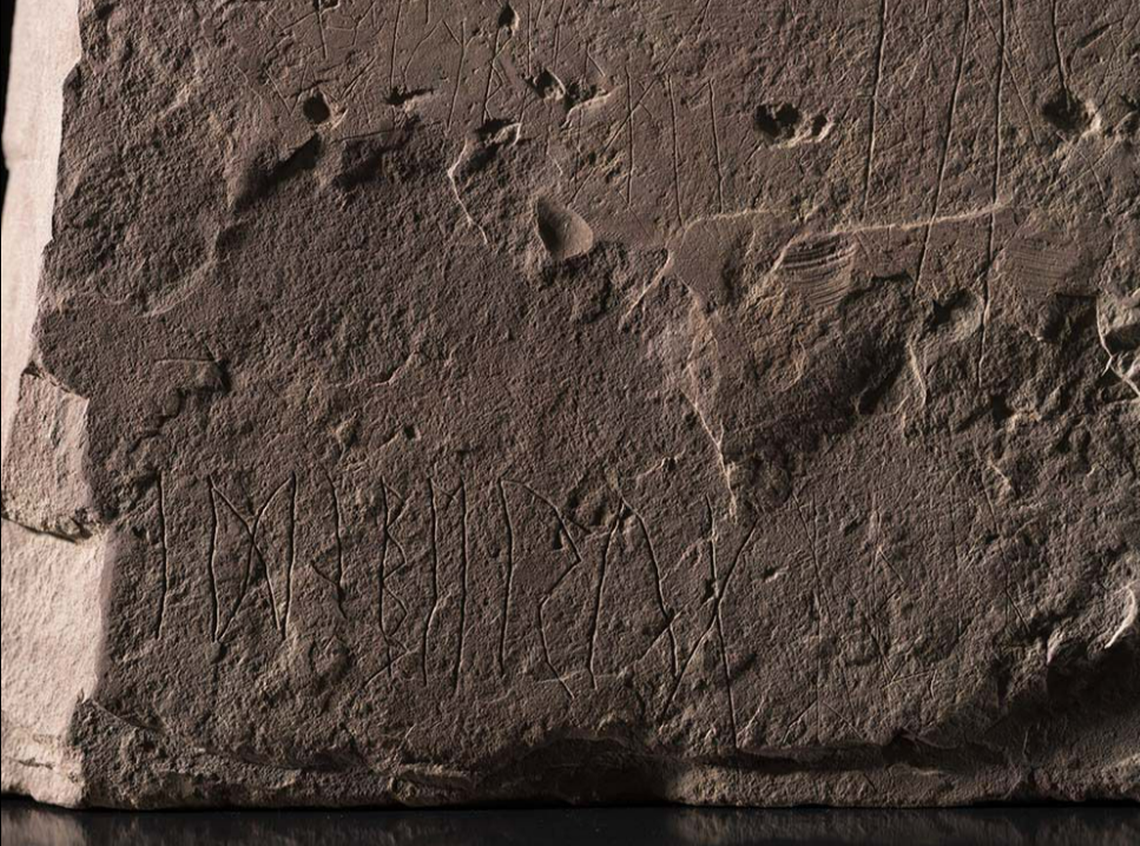World’s oldest rune stone discovered in Norway — and kept secret for over a year
From a passing glance, it looks like an ordinary stone. But upon closer inspection, the unexceptional hunk of red rock reveals a series of ancient symbols known as runes that were likely carved 2,000 years ago.
Archaeologists came across the stone in 2021 in a Norwegian graveyard, according to research published by the University of Oslo. It is believed to be the world’s oldest known rune stone, leading scholars to speculate about its origin and purpose.
Inspired by the Roman alphabet, early Scandinavian people developed their own written symbols, or runes, during the early Common Era, according to researchers.
But little else about the language’s origins are known, so researchers looked to the stone, the earliest known example of Scandinavian writing, as a potential source of valuable information.
“Having such a runic find fall into our lap is a unique experience and the dream of all runologists,” said Kristel Zilmer, a University of Oslo professor. “For me, this is a highlight, because it is a unique find that differs from other preserved rune stones.”

The artifact, now called the Svingerud Stone, was found above an ancient grave site a few miles outside of Oslo, according to researchers. Using radiocarbon methods, the grave, which contained cremated bones, was dated to between 1 and 250 AD, indicating the stone was likely carved around the same period.
Before the discovery was revealed to the public, Zilmer, an iconography specialist and runologist, spent the past year attempting to interpret the stone’s faint inscriptions. Thousands of years ago, the runic language was in a constant state of change, posing a challenge for modern-day interpreters.
“As we gradually realized what an important find this is, we needed to be sure about this information,” Zilmer told McClatchy News in an email. “Also, during further searches on the same location (during) autumn 2022, our archaeologist found additional fragments some of which may belong together with the main stone, while others may possibly be parts of a second rune-stone. That meant that we again needed to work a bit more before finally going public with the find.”
Among the many etchings, eight runes stand out, according to Zilmer. When converted to Roman letters, the characters spell: Idiberug.
“The text possibly refers to a woman called Idibera and the inscription could mean ‘For Idibera.’ Other possibilities are that idiberug is the rendering of a name such as Idibergu/Idiberga, or perhaps the kin name Idiberung,” Zilmer stated.
Many rune stones, much like modern tombstones, are understood as commemorations of the dead, according to the Museum of Denmark. Often they enumerated the “honorable deeds” of powerful individuals.
However, it’s possible that runes on the Svingerud Stone are not linguistically significant. Instead, someone, perhaps a child, could have been practicing the language or imitating the writing, according to Zilmer.
Though the stone provides an important window into the past, more research is needed to untangle the enigmatic history of runic writing, according to Zilmer.
Body found after 78-year-old US tourist gets lost bushwalking in Australia, cops say
NASA to hunt for aliens using new ‘cutting-edge’ laser technology, researchers say
Man tells friend ‘this fish is huge,’ then he vanishes overboard, Hawaii cops say
